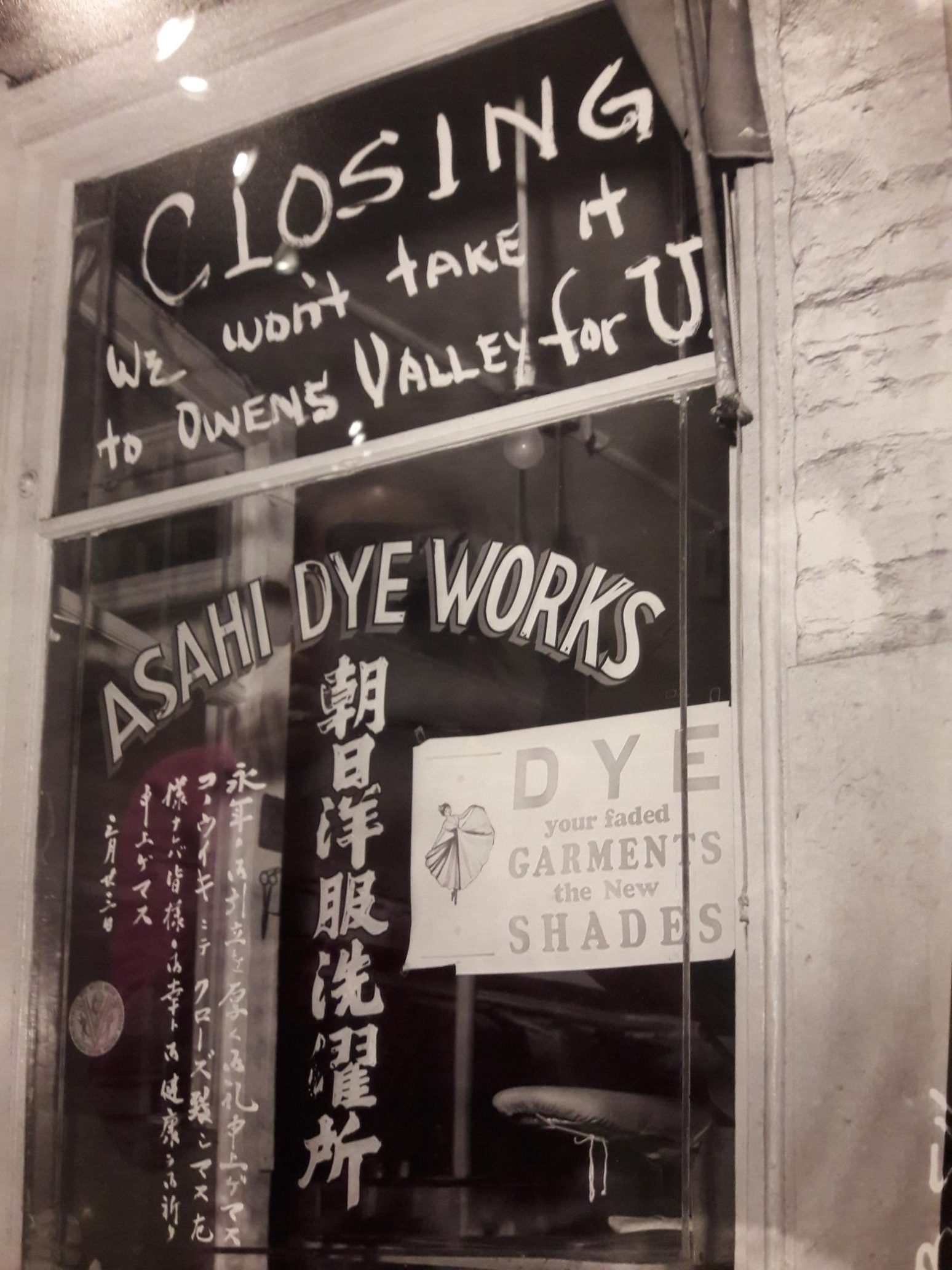WIT Life #322: Then They Came for Me
Written by freelance Writer/Interpreter/Translator Stacy Smith (Kumamoto-ken CIR, 2000-03), WIT Life is a periodic series about aspects of Japanese culture such as language, film, business, food and politics. Stacy starts her day by watching Fujisankei’s newscast in Japanese, and here she shares some interesting tidbits and trends along with her own observations.

Sign from Japanese-run business telling customers their clothing won’t be brought to the incarceration camp
After interpreting in Manhattan Criminal Court earlier this week, I stopped for lunch in Chinatown and found myself with some time on my hands afterwards. I decided to visit the International Center of Photography and was nicely surprised to find the exhibition Then They Came for Me: Incarceration of Japanese Americans during WWII (through May 6), a comprehensive portrayal of this reprehensible period in American history. It includes works from prominent photographers such as Dorothea Lange and Ansel Adams, letters and other personal mementos, and moving video testimonials from those who were incarcerated or have family members who had been.
From 1942-1946, thousands of Japanese Americans were forcibly relocated to incarceration camps in desert and swamp areas of the Western U.S. The original term for this had been “internment,” but I learned from the exhibition that Japanese American organizations and scholars have developed new terminology in an effort to more accurately reflect the wrongness of what took place.
For example, what was initially referred to as “relocation centers” are now called “illegal detention centers,” and those who were detained are known as “inmates” or “prisoners” as opposed to the original “evacuees” or “internees.” At the time “concentration camp” was used even by government officials, but due to confusion with Nazi death camps the term “incarceration camp” came to be favored (other acceptable terms include “American concentration camp,” “detention center” and “prison camp”).
Monday marks the 76th anniversary of FDR’s issuing of Executive Order 9066, which led to the forced removal of Japanese American citizens and legal Japanese residents from their homes by stating that “any and all persons could be removed from any area designated as a military zone.” We see echoes of this discriminatory decree in current edicts against Muslims and other minorities, and fervently hope that a renewed awareness of past injustice can help prevent history from repeating itself.


Comments are closed.